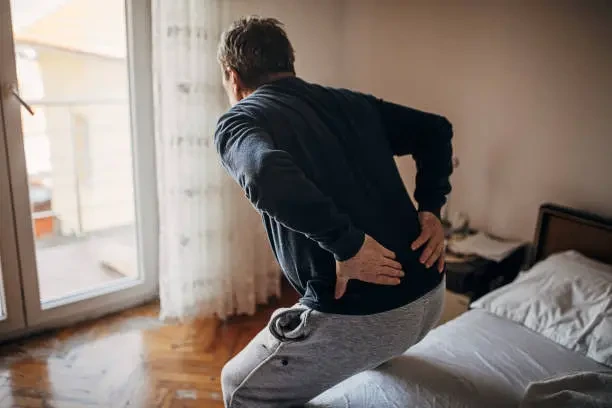If you’re experiencing waist pain and prefer to avoid drug intake, there are several healthy approaches you can try to alleviate the discomfort. Here are some suggestions:
1. Heat or cold therapy: According to Healthline, Applying a heating pad or a cold pack to the affected area can help reduce pain and inflammation. Experiment with both heat and cold to see which provides more relief for your specific condition.
2. Gentle stretching exercises: Engaging in gentle stretching exercises can help relieve tension and improve flexibility. Focus on stretches that target the muscles around your waist, such as side bends, trunk rotations and gentle back stretches. However, be cautious and don’t push yourself beyond your comfort level.
READ ALSO: Three (3) Categories Of Foods That Are Harmful to The Heart When Taken Too Much
3. Core-strengthening exercises: Strengthening your core muscles can provide support to your lower back and alleviate waist pain. Activities such as yoga, Pilates, or exercises that specifically target the abdominal and back muscles can be beneficial. Consult with a physical therapist or fitness professional to ensure you’re performing exercises correctly and safely.
4. Posture awareness: Poor posture can contribute to waist pain. Pay attention to your posture throughout the day, especially when sitting or standing for extended periods. Ensure that your spine is properly aligned, and consider using ergonomic supports, such as a lumbar roll or an ergonomic chair.
5. Massage therapy: Gentle massage can help relax tight muscles and improve blood circulation in the waist area. You can try self-massage techniques or seek the assistance of a professional massage therapist.
6. Relaxation techniques: Stress and tension can exacerbate waist pain. Practicing relaxation techniques, such as deep breathing exercises, meditation, or mindfulness, can help reduce stress levels and promote relaxation, which may alleviate pain.
READ ALSO: These 5 Diseases Are All Caused By Microwave Ovens and You’ve Probably Ignored Them
7. Physical activity and movement: Staying active and incorporating regular physical activity into your routine can help manage and prevent waist pain. Low-impact activities like walking, swimming, or cycling can be beneficial. However, consult with your healthcare provider before starting any exercise program, especially if you have an existing condition.
8. Proper lifting techniques: If you need to lift heavy objects, ensure that you use proper lifting techniques. Bend your knees, keep your back straight, and use your leg muscles to lift the load rather than straining your waist.
Remember, it’s important to listen to your body and not push yourself beyond your limits. If your waist pain persists or worsens, it’s advisable to consult with a healthcare professional for a thorough evaluation and appropriate guidance.








